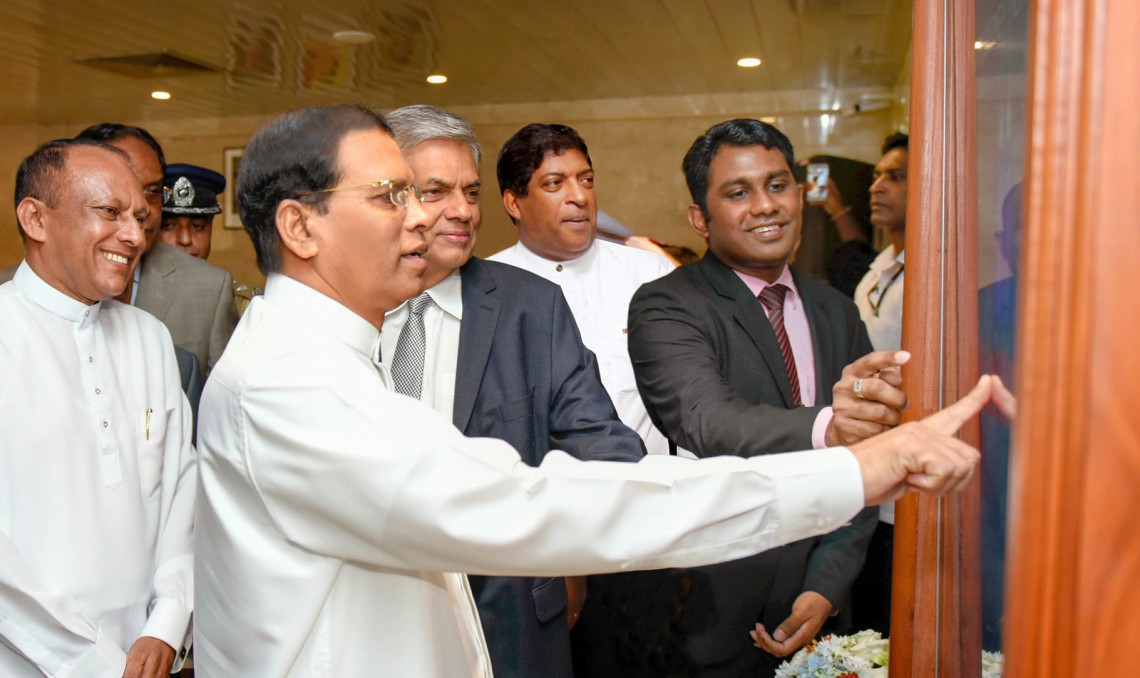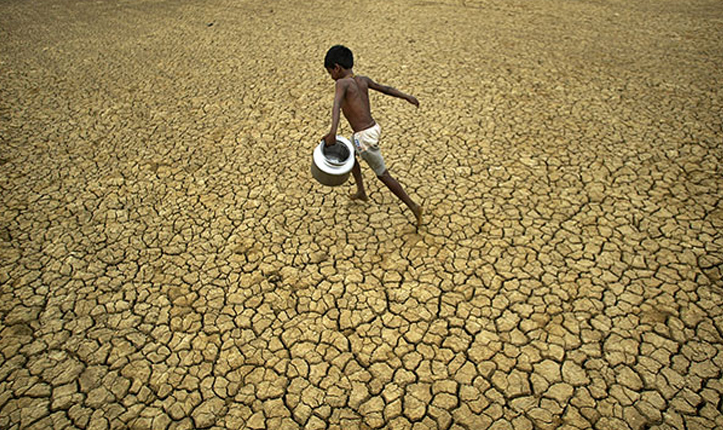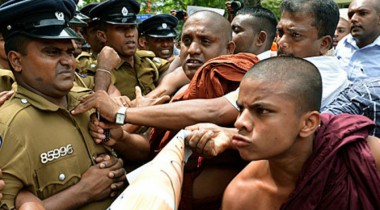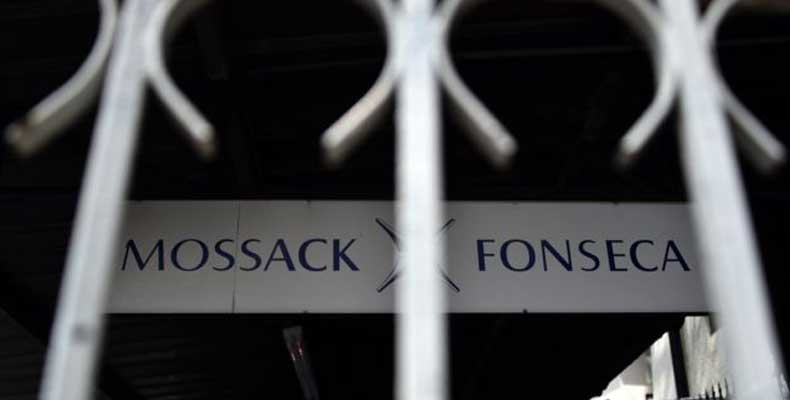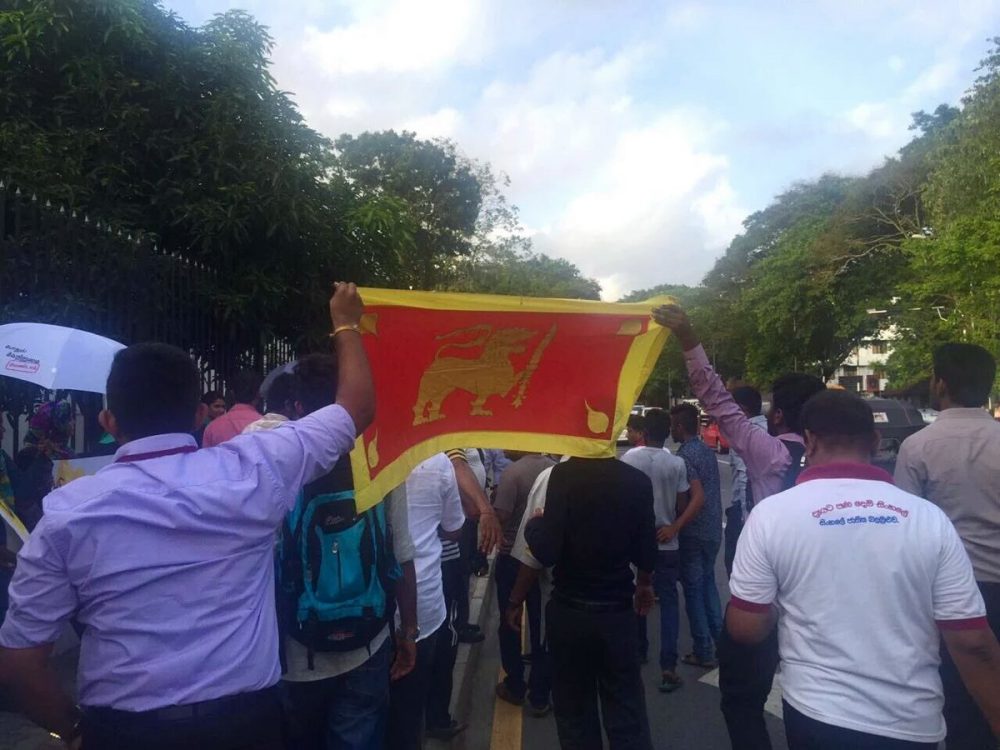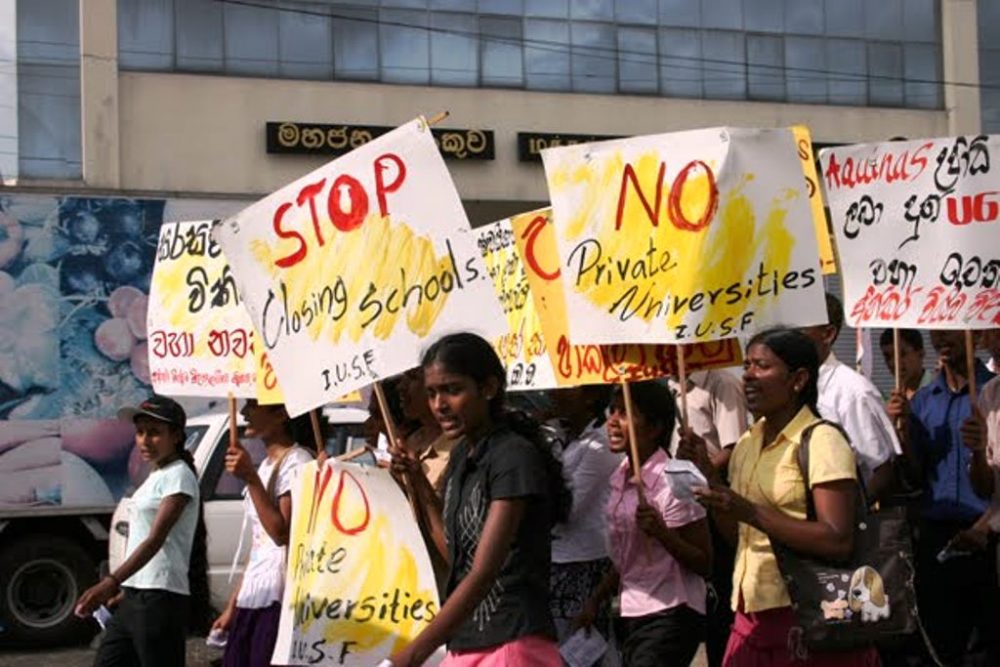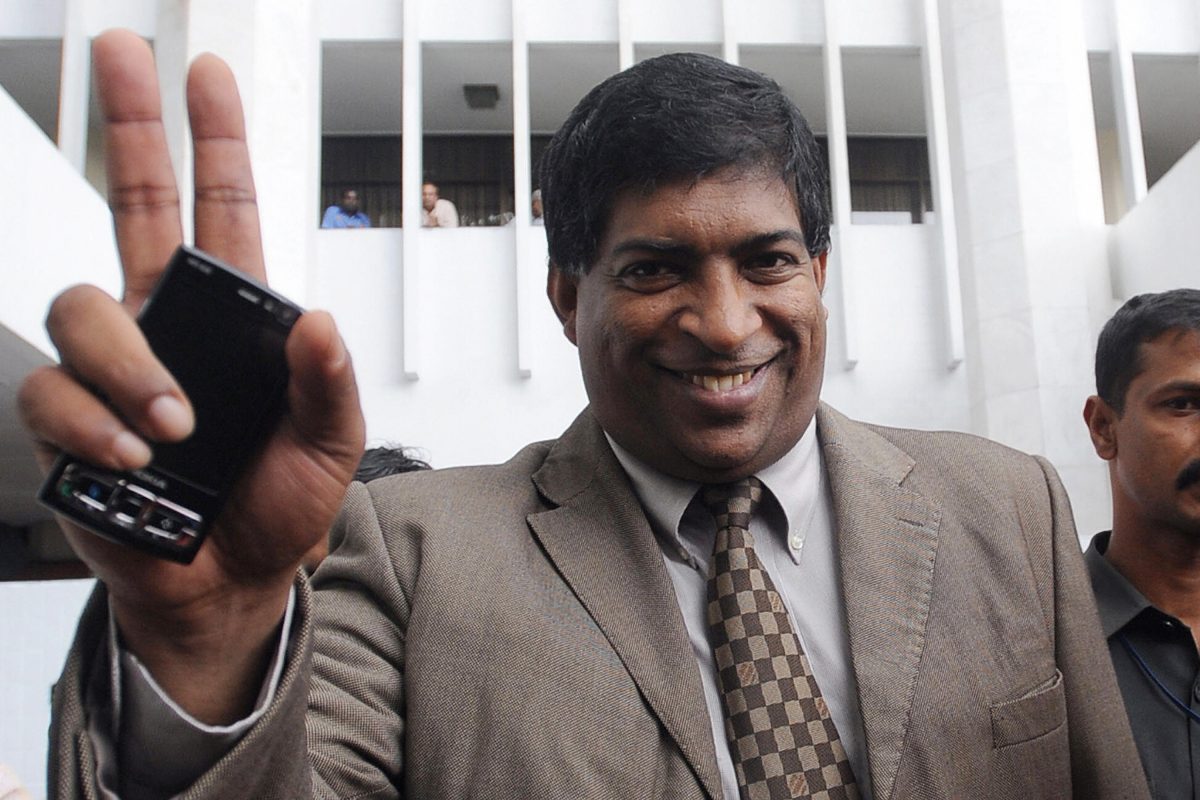
In September last year, we discussed the possible means of escape from the looming debt trap or balance of payment crisis that Sri Lanka was on the brink of. We owed the world (and still do) a colossal Rs. 9.5 trillion in domestic and foreign debt, and the threat of a possible default still looms large. The Government’s attempts to service this debt, so far, has yet to yield any real results, and despite the International Monetary Fund’s (IMF) generous loan of USD 1.5 billion and the sale of some state-owned assets by way of equity swaps, a fresh economic crisis is said to be impending, with the Governor of the Central Bank himself having come forward recently to issue a warning to the Cabinet of Ministers.
As we pointed out in our Economic Outlook for 2017, Sri Lanka is expected to see a low economic growth environment over the course of this year, with tighter fiscal and monetary conditions, although things are likely to look up somewhat on the macro front. The ongoing drought, reportedly the worst in four decades, is not helping matters. Economists have also predicted a drag on consumption growth over the next few months due to higher taxation.
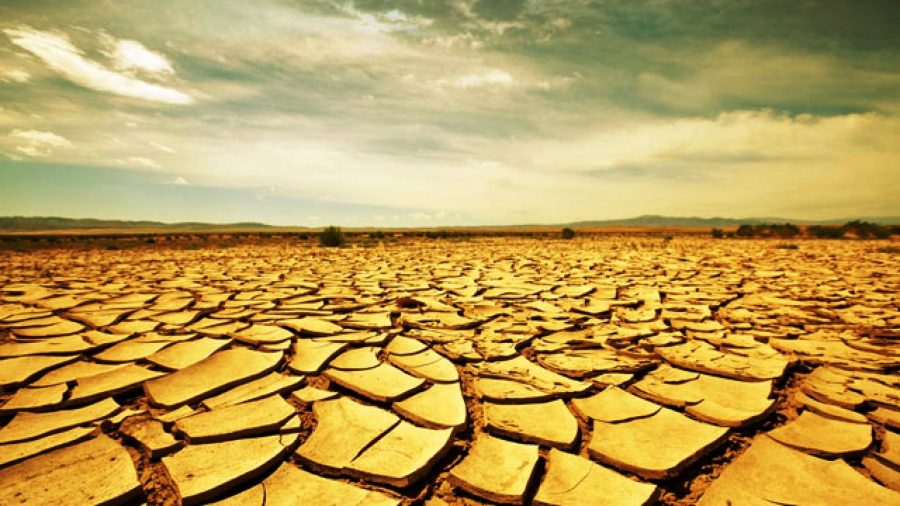
The prevailing drought conditions, said to be the worst in four decades, are expected to make matters worse in the coming months. Image courtesy dmc.gov.lk
Fiscal Consolidation
To ease the debt burden at least in the short term, many proposals have been made: chief of which is fiscal consolidation. In order to acquire more loans, the country needs to at least appear to have the capacity to pay back those loans. When the current creditors come calling in 2019, Sri Lanka will need to have built up its external reserves in addition to consolidation of fiscal prudence (A revenue-based fiscal consolidation programme is reportedly on the cards). Sri Lanka’s foreign exchange reserves currently stands at USD 5.5 billion, though the Central Bank is optimistic that it will increase by roughly USD 2 billion by the end of the year.
In his presentation early this year titled ‘Road Map for 2017 and Beyond’, Central Bank Governor Dr. Indrajit Coomaraswamy said that the new Foreign Exchange Act was designed to create a more conducive environment for both local and foreign investors. A number of measures will be taken in the medium term to further relax foreign exchange transactions, he said.
In parallel to these efforts, economists such as Deshal de Mel have highlighted the need to build up the capacity to generate Sri Lanka’s own non-borrowed external inflows to meet future external payments, although it is unlikely that these inflows would materialise in sufficient magnitude within two years. To counter this, the country ought to start attracting export-oriented FDI, sooner rather than later. The problem, however, is that that FDI is taking its time to get here despite the Government’s uber enthusiasm.
Chief Economist at the Ceylon Chamber of Commerce Anushka Wijesinha told Roar that there are definite concerns on the external front, advocating the need to attract non-debt creating foreign inflows (FDI) this year.
“The external payments position will be under severe strain. Already we are down to about 3.2 months of imports according to the Central Bank Governor. Any change in global conditions for the worse, will hit us bad. The good news is that Sri Lankan fiscal and monetary policy are now seen to be in more stable territory, which helps us put on a good face when we go to international capital markets for the USD 1.5 billion bond. We shouldn’t have much trouble raising that at all,” he said.
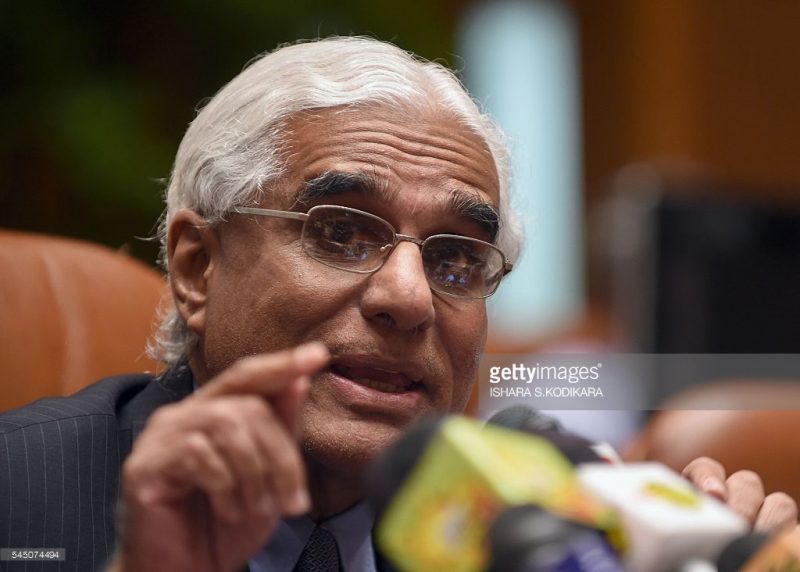
Central Bank Governor Dr. Indrajit Coomaraswamy has said that having an IMF programme is the economic equivalent of being in hospital. Image courtesy Getty Images
Economic Crisis Or Political Crisis?
Says Deshal De Mel: “This time last year we were in a real crisis situation ‒ with loads of upcoming debt repayments and very few windows open to pay it. Luckily, with the IMF programme, changes at CBSL and improvement of government revenue collection, global market confidence has returned and, now, things are a lot more stable and we can meet our upcoming debt obligations at least up until 2019. (There is one snag we have to overcome and that’s the USD 1 billion expected from the China debt:equity conversion ‒ the delay in that makes cash flows slightly tricky, but I reckon it will come through).”
The overall improved stability comes at a cost, however, warns De Mel, in the form of higher taxes, a weaker rupee, and higher interest rates.
“So it will be a tough year (and a few more months ahead) for economic activity and consumers ‒ but that’s more a chronic problem than a crisis per se. If the chronic problem continues for long, breeding public discontent, it could translate into a political crisis faster than it becomes an economic crisis,” he told Roar.
More Loans, More Problems
Continued borrowings, critics argue, is only going to increase the possibility of a balance of payment crisis due to the increasing capital flight. If US President Donald Trump implements his infrastructure build-out, the US Federal Reserve will likely increase interest rates, thereby increasing the cost of capital for Sri Lanka. This translates to market borrowings becoming that much harder. In this context, left-leaning economists such as Ahilan Kadirgamar have called for restrictions in imports (going against IMF and World Bank conditions) to overcome this.

Sri Lanka’s debt at a glance (as of September 2016). Data courtesy Ministry of Finance
“It was clear all along, this year is going to be a difficult year. One of the few ways out for the Government, if it is not willing to reduce/restrict imports, is to sell state assets. The question is how quickly the economic pressure will mount, which depends to an extent on capital outflows and falling foreign reserves. The last worrying bit of data was the fall in foreign reserves during the month of January by 10% down to US$ 5.45 billion. If that fall continued in February, then we are increasingly in trouble,” Kadirgamar told Roar.
The other side, however, has long been calling for a re-orientation of the state’s role in economic engagement from its current dominance to one of a regulatory nature focused on occasionally stepping in to ensure fairness and equity (going out of its way to not mention the dreaded P word). Public expenditure, these thinkers argue, needs to be more streamlined to reduce future debt creation as well as to ease the burdens on the citizenry.
Playing ball with IMF
The IMF has been talking to the Finance Ministry over the past few weeks, as reported by local media, on the country’s net international reserve (NIR) target, suggesting a purchase of USD 500 million from the market. The Finance Ministry, however, has reportedly stated that doing so would lead to a sharp depreciation of the rupee. According to The Sunday Times, the Ministry went a step further and made it clear to the IMF that it would be imprudent to impose unjustified burdens on the people of Sri Lanka in the midst of the worst drought in four decades. The IMF, the newspaper went on to say, has proposed an upward adjustment of interest rates to counter high credit growth; the normalisation of US interest rates and the impact of the proposed exchange rate depreciation. The Finance Ministry, however, has countered that these measures are “inappropriate now as there are no signs of overheating in the economy”, while also pointing out that there is an output gap with growth below the potential rate, inflation is maintained within the prescribed band and the current account deficit has adjusted from 2.4% of GDP in 2015 to 2.2% in 2016.
In a fresh development, reports emerged this week that ahead of IMF Head Christine Lagarde’s visit to Sri Lanka next Sunday, discussions are underway with the international organisation on the possible sale of “non-strategic” assets such as the Colombo Hilton, Lanka Hospitals, Water’s Edge, and the Hyatt Hotel. President Maithripala Sirisena, however, has declared his strong opposition to the sale of any profit-making SoEs. (An IMF report estimates that a total of USD 1.5 billion could be raised by this proposed sale). An additional USD 250 to 300 million is likely to be raised by the sale of the Mattala Airport.

Frequently referred to as the world’s emptiest airport, a proposed sale of the Mattala International Airport is expected to raise USD 250 – 300 million. Image courtesy Daily News
Reforms Needed
In his recent presentation, Dr. Coomaraswamy made some poignant remarks on the status quo: “In what is often termed the Asian century, Sri Lanka is the only country other than Afghanistan in the Asia/Pacific region with an IMF programme ‒ having an IMF programme is the economic equivalent of being in hospital. We are not in the ICU but clearly in hospital. The remedial treatment is known and it is encouraging that it has commenced.”
The Governor further said that “consensus must be built among politicians, policy makers, and the general public on the need for cohesive reforms.”
While there is no arguing that reforms, cohesive or otherwise, are the need of the hour, how exactly ‒ and, indeed, how soon ‒ such reform is carried out will, needless to say, decide the fate of the economy in the long term. What cannot be overstated is that, slowly but surely, time is running out.
Featured image courtesy Bloomberg
